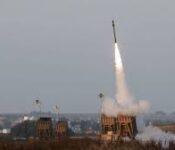Vaetchanan: Inadvertent Murder
The Refugee
We are all familiar with the modern notion of refugee. Our cities provide a haven of refuge for victims of instability and violence the world over, who petition our country for asylum.
When our ancestors entered Israel, they too appointed cities of refuge. However, these cities were not populated by the victims of aggression, but by its perpetrators.
A Jew, who inadvertently murdered another was forced to seek refugee in one of these designated cities. He was to remain in that city until the passing of the High Priest of his time. The city provided a haven of safety. As long as he remained within it’s limits he was protected from all forms of vengeance. (1)
The killer wasn’t prosecuted for murder. He didn’t kill out of malice nor did he intend to kill. Yet, he was exiled. Why was he exiled and why did this exile end with the demise of the High Priest?
False Innocence
It is true that the perpetrator is technically innocent, but he is not morally innocent. Inadvertent murders occur because its perpetrators don’t take sufficient precaution before engaging in the act that kills the bystander. This carelessness results in the loss of life.
Life originates with G-d. It is sacred and divine. Yet the perpetrator’s inadvertent carelessness denied his fellow the divine breath of life.
One, who is attached to G-d treats life with reverence. He takes every measure to avoid inadvertent killing. He ensures that he doesn’t drive the divine presence from this world by snuffing out another’s life. The perpetrator’s evident carelessness about life is evidence of his carelessness about G-d. He is not guilty of murder, but he is guilty of callous irreverence. (2)
Sacred Environment
It is for this reason that he was exiled to the city of refuge. These cities were not populated by criminals, but by Levites and scholars; stalwart devotees of Torah.
The court ensured that the refugee was surrounded by pious and learned Jews. The Torah academies in these cities were staffed by foremost rabbis and teachers. If the inadvertent killer was a devoted disciple of a particular rabbi and proved unable to study under the tutelage of another rabbi, his personal rabbi was obliged to join him in exile. (3)
The purpose of exile was to immerse the perpetrator in an exalted and sacred environment. His soul would bask in the glow of Torah and bathe in the warmth of our heritage. It was hoped that by living among the pious and righteous he would be spiritually reinvigorated.
An Inspired Generation
The commandment to appoint cities of refuge didn’t take effect until our ancestors actually entered the land of Israel. There were no cities of refuge in the desert. In fact the Torah doesn’t record a single incident of inadvertent murder throughout our ancestors’ forty year journey in the desert!
Moses told the generation of the desert, “You, who are attached to G-d, your lord, are all alive today.” (4) This generation was alive, in fact, filled with life, because they were attached to G-d. They were consumed at all times with thoughts of divinity. (5)
One who is inextricably bound to G-d doesn’t commit inadvertent murder. Such people take all the necessary and even unnecessary precautions to avoid such pitfalls. Influenced by the presence of Moses, the generation that journeyed through the desert had no need for cities of refuge.
Nevertheless, Moses designated three cities of refuge in the lands he had conquered, adjacent to Israel, for the sake of future generations. (6)
Why didn’t he leave this task to the next generation?
Moses’ Touch
The purpose of these cities was to elevate the spiritual status of the refugee. To this end these cities were bastions of sanctity and goodness into which the refugee could be immersed. In other words, these cities were graced with the aura of Moses.
Moses elevated his generation to sacred piety through his attachment to G-d. The cities of refuge would have to replicate Moses’ efforts in later generations by elevating the inadvertent murderers and reattach them to G-d.
By designating the cities of refuge Moses endowed these cities with the capacity to elevate their inhabitants. He planted the spiritual seeds from which these cities blossomed and thus provided the crucial link between himself and future generations. This task couldn’t be left to Joshua, Moses had to do it himself. (5)
Man of Peace
If the cities of refuge filled in for Moses in later generations, the High Priests of those generations filled in for their predecessor, Aaron.
Footnotes
- Numbers 35: 9-34.
- See Bab. Talmud, Makot 1b. See also commentary of Tosafot to Makot 11b and Rashi’s (R. Shlomo Yitzchaki, Troyes France, 1040-1105) commentary to Genesis 9: 5.
- See Bab. Talmud, Makot, 10a.
- Deuteronomy 4: 4.
- Likutei Sichos (R. Menachem M Schneerson, Rebbe of Lubavitch, NY, 1902-1994) IXL p. 120.
- Deuteronomy 4: 41-49.
- See Rashi’s Commentary to Numbers 35: 25. For a different approach see Jerusalem Talmud, Yuma 7: 3, “An inadvertent killer has no method of atonement (no form of sacrifice is available to him as is available to other inadvertent sinners) the Torah therefore deemed the passing of the High Priest his atonement. See also Bab. Talmud, Moed Katan 28a that the passing of the righteous provides atonement.
- Based on Likutei Sichos IIX p. 106.
Tags: morality, murder

























